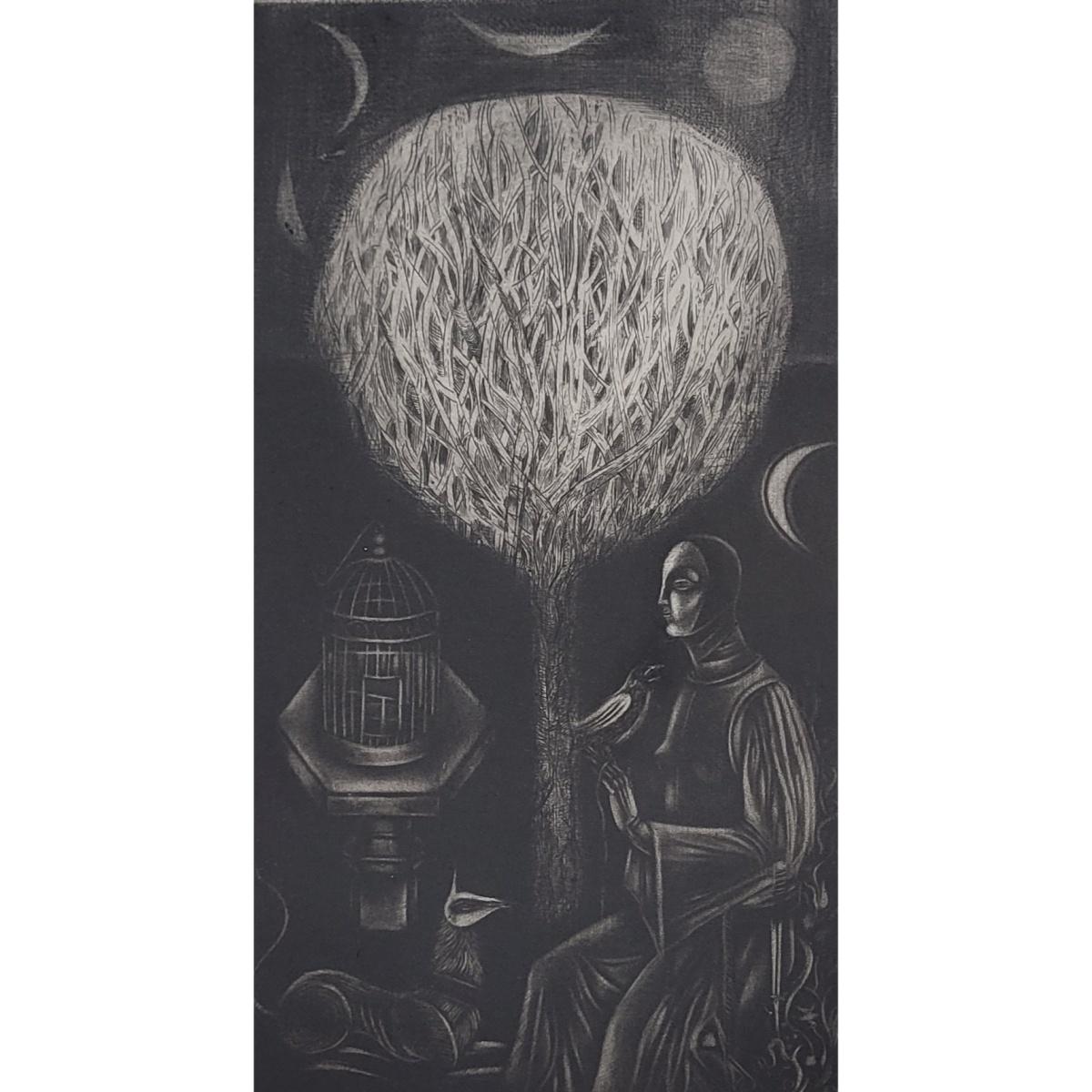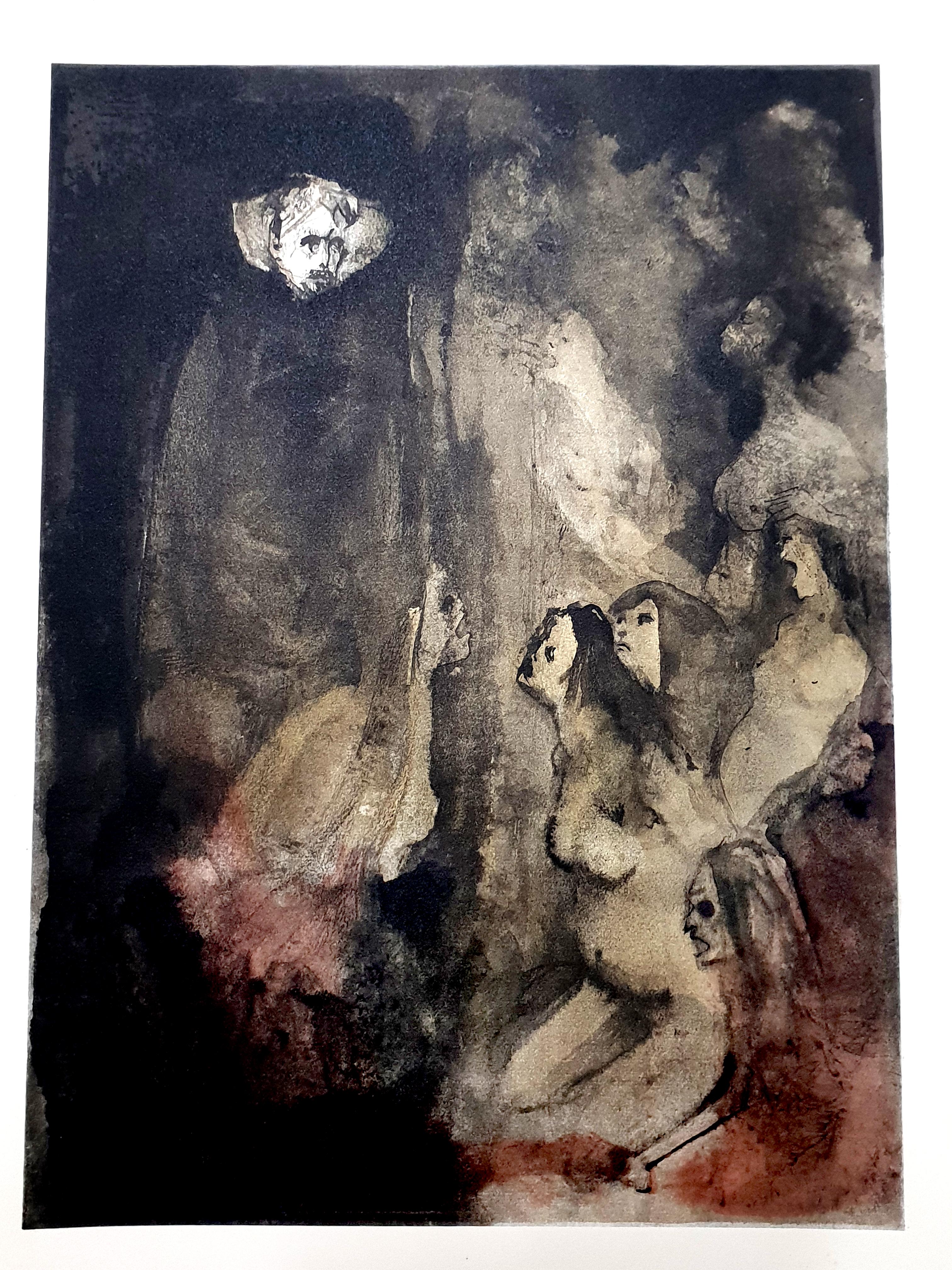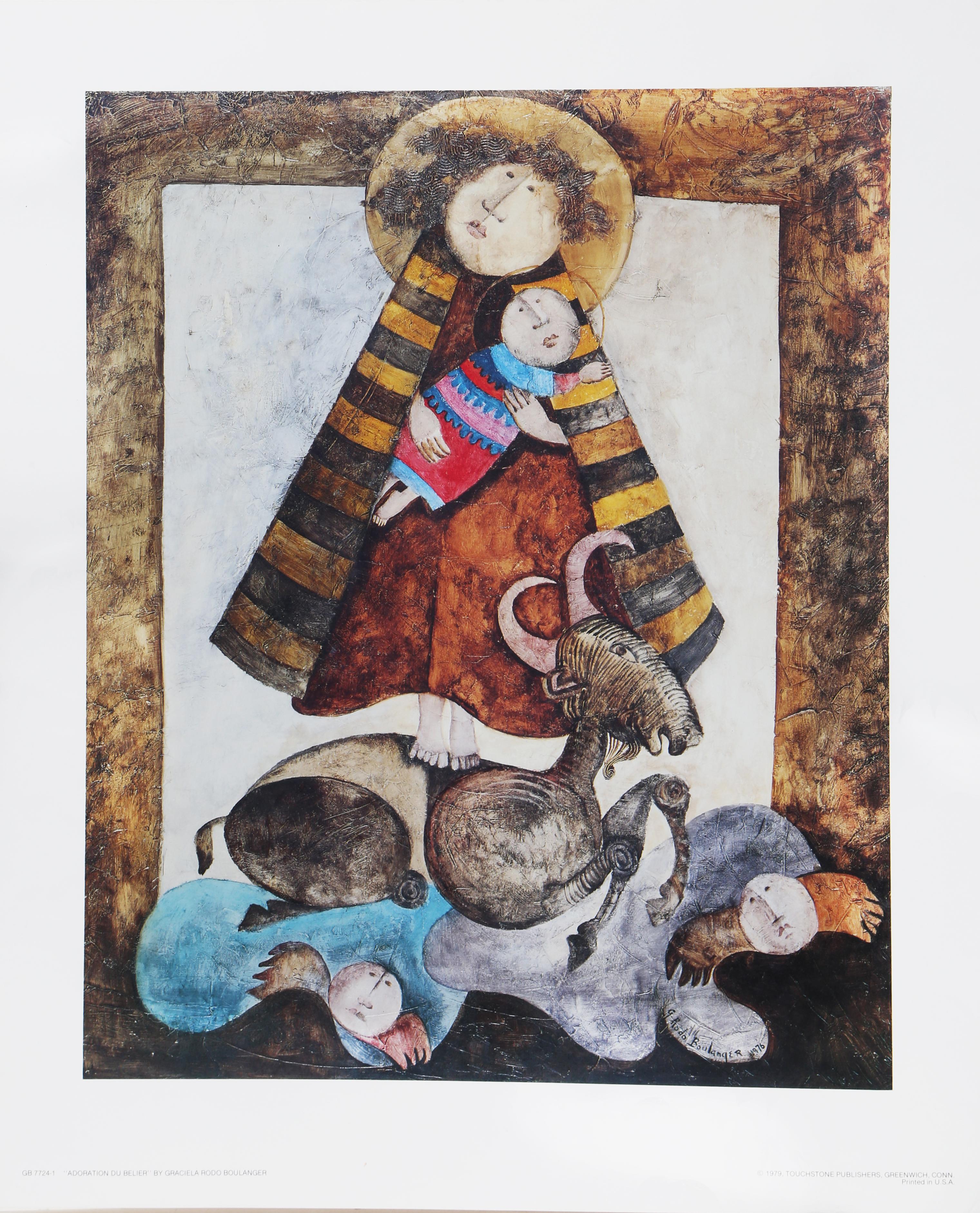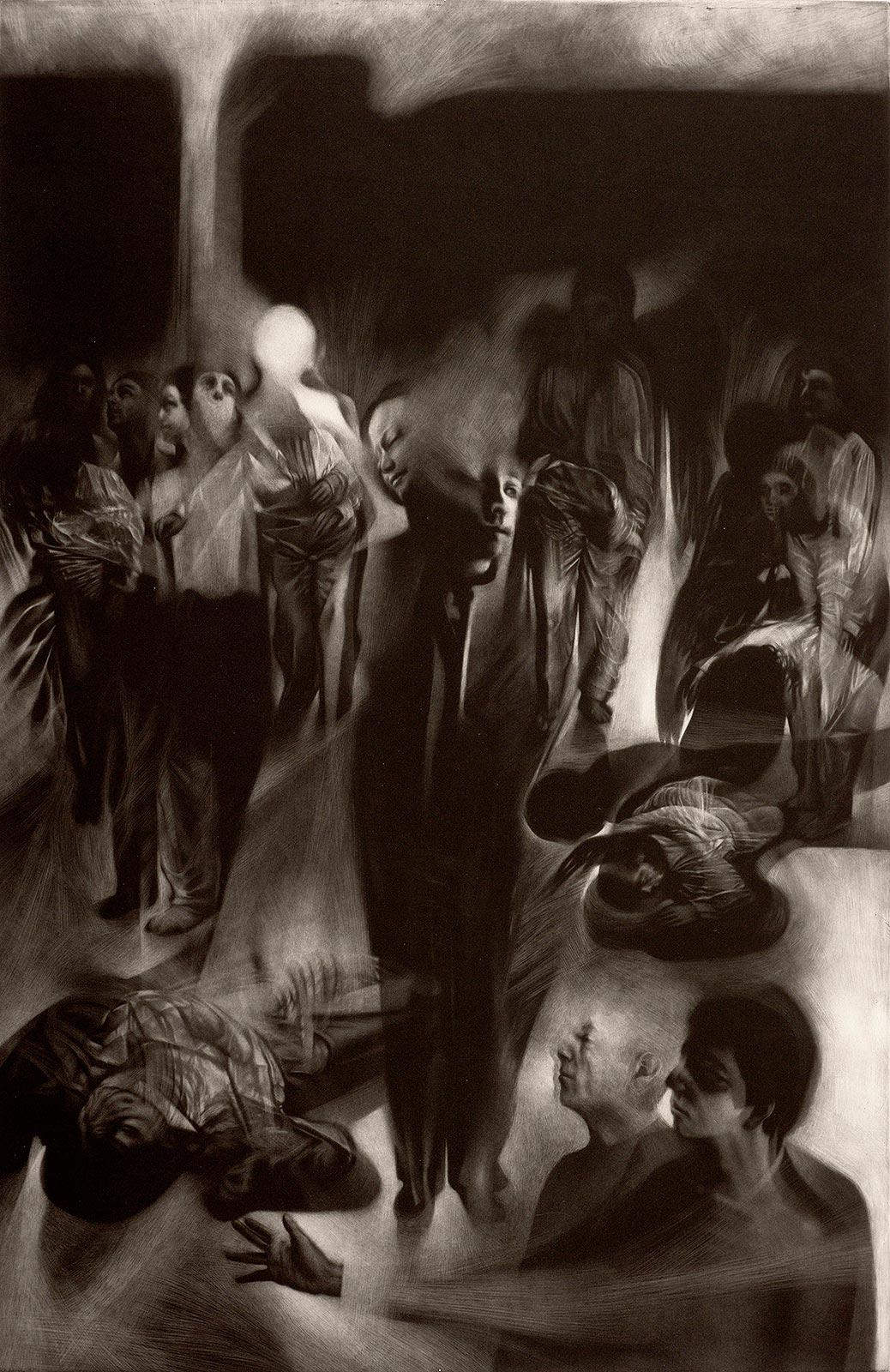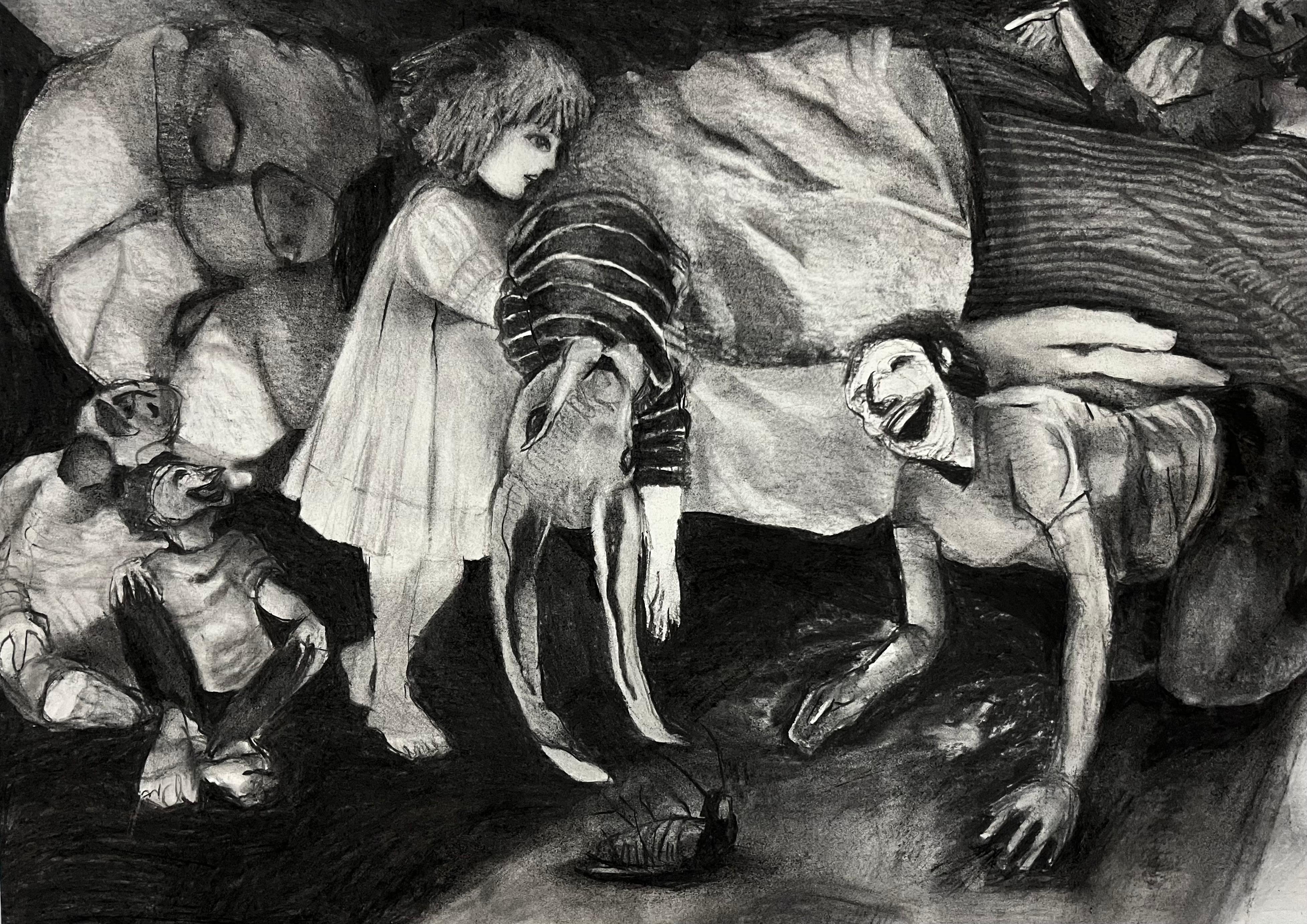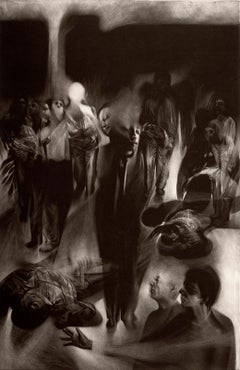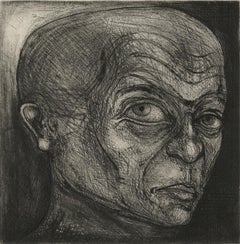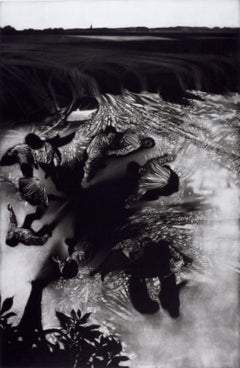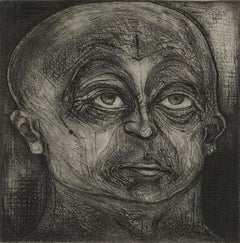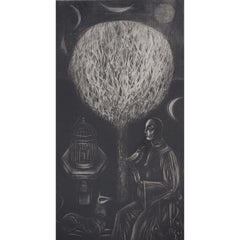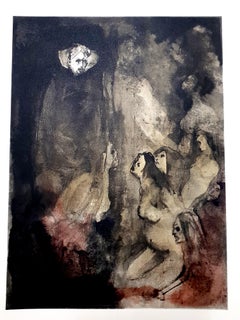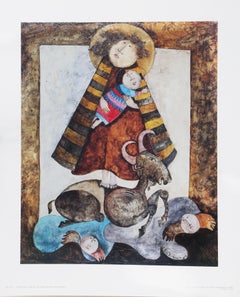Items Similar to Lux Aeterna I (Eternal Light -The Requiem/ copters hover over fearful refugees)
Want more images or videos?
Request additional images or videos from the seller
1 of 9
Ana Maria PachecoLux Aeterna I (Eternal Light -The Requiem/ copters hover over fearful refugees)1995
1995
$1,125
$1,60029% Off
£866.57
£1,232.4529% Off
€989.52
€1,407.3229% Off
CA$1,604.84
CA$2,282.4329% Off
A$1,755.39
A$2,496.5629% Off
CHF 921.19
CHF 1,310.1329% Off
MX$20,993.51
MX$29,857.4429% Off
NOK 11,625.32
NOK 16,533.7929% Off
SEK 10,845.02
SEK 15,424.0329% Off
DKK 7,389.90
DKK 10,510.0829% Off
About the Item
Ana Maria Pacheco portrays the fear and feelings of the displacement of refugees cowering beneath helicopters overhead. The title of the work refers to the Requiem Mass: ”Rest eternal grant unto them, O Lord: and let eternal light shine upon them”, placing images of atrocity in the context of prayer and commemoration. This work seems to combine ancient imagery in contrast with the modern war machine.
Ana Maria Pacheco (born 1943) is a Brazilian artist who works in the United Kingdom. Following degrees in both Sculpture and Music in Goiás and Rio de Janeiro, she taught and lectured for several years at Universities in Goiás before she moved to London in 1973 to study at the Slade School of Art; from 1985 to 1989, she was Head of Fine Art at the Norwich School of Art.
Despite also being a painter and printmaker, Pacheco is best known for her multi-figure groups of polychrome sculptures carved from wood. These are typically exhibited as installation pieces and include "Man and His Sheep" (Birmingham Museum and Art Gallery) and "Dark Night of the Soul" (1999), created during her residency at the National Gallery, London as a response to The Martyrdom of Saint Sebastian by the Pollaiuolo brothers.
Pacheco (with a team of two helpers) produced a large figure in yellow limestone for the Stoke-on-Trent National Garden Festival of 1986.
The Muscarelle Museum of Art exhibited Pacheco's "Study for St. Sebastian II" in an exhibition titled "Women with Vision" from February 10, 2018 - May 13, 2018.
- Creator:Ana Maria Pacheco (1943)
- Creation Year:1995
- Dimensions:Height: 15 in (38.1 cm)Width: 20 in (50.8 cm)
- Medium:
- Movement & Style:
- Period:
- Condition:
- Gallery Location:New Orleans, LA
- Reference Number:1stDibs: LU84133775711
About the Seller
4.9
Recognized Seller
These prestigious sellers are industry leaders and represent the highest echelon for item quality and design.
Platinum Seller
Premium sellers with a 4.7+ rating and 24-hour response times
Established in 1988
1stDibs seller since 2018
806 sales on 1stDibs
Typical response time: 16 hours
Associations
International Fine Print Dealers Association
- ShippingRetrieving quote...Shipping from: New Orleans, LA
- Return Policy
More From This Seller
View AllChute I (the fall of ethereal creatures wandering in a hellish landscape)
By Maurice Pasternak
Located in New Orleans, LA
Maurice Pasternak has created a surreal landscape that includes several spirit-like creatures seeming to wander in an unknown landscape He moves images around on the paper to create ...
Category
Early 2000s Surrealist Landscape Prints
Materials
Mezzotint
One of Twelve XI (etchings of one of 12 heads based on monumental sculpture)
By Seyed M. S. Edalatpour
Located in New Orleans, LA
"One of Twelve XI" is an etching, 1995, 4 3/4 x 4 3/4, edition: 24, signed in pencil. The print has an embossed chop in the lower right corner, a capital P in a circle indicating th...
Category
1990s Post-Modern Portrait Prints
Materials
Etching
Personnes Etendues and Arbe (People seek land by tree)
By Maurice Pasternak
Located in New Orleans, LA
Maurice Pasternak has created a surreal landscape that includes several spirit-like creatures seeming to wander in an unknown terrain. He moves images around on the paper to create a...
Category
Early 2000s Surrealist Landscape Prints
Materials
Mezzotint
$637 Sale Price
36% Off
One of Twelve X (etchings of one of 12 heads based on monumental sculpture)
By Seyed M. S. Edalatpour
Located in New Orleans, LA
"One of Twelve X" is an etching, 1995, 4 3/4 x 4 3/4, edition: 24, signed in pencil. The print has an embossed chop in the lower right corner, a capital P in a circle indicating tha...
Category
1990s Post-Modern Portrait Prints
Materials
Etching
One of Twelve XII (etchings of one of 12 heads based on monumental sculpture)
By Seyed M. S. Edalatpour
Located in New Orleans, LA
"One of Twelve XII" is an etching, 1995, 4 3/4 x 4 3/4, edition: 24, signed in pencil. The print has an embossed chop in the lower right corner, a capital P in a circle indicating t...
Category
1990s Post-Modern Portrait Prints
Materials
Etching
Mujeres Veracruzans (three seated women from Vera Cruz Mexico in shawls)
By Francisco Dosamantes
Located in New Orleans, LA
Three native Mexican women all similarly dressed in traditional, flowing white dresses covered in dark, fringed shawls raise their heads as if the...
Category
Mid-20th Century Modern Figurative Prints
Materials
Lithograph
You May Also Like
Porioheresis. 2004. Paper, etching, 49.5x51.5 cm
Located in Riga, LV
Nele Zirnite (1959)
2003 Associate Professor, Art Department, the Latvian Christian Academy
2000 M.F.A., the Latvian Art Academy
1995 – 2003 Lecturer, Graphic Arts Department...
Category
Early 2000s Symbolist Mixed Media
Materials
Paper, Etching
A concert. Mezzotint print, Limited edition, Monochromatic, Polish artist
By Ewa Kutylak
Located in Warsaw, PL
Contemporary figurative monochromatic mezzotint print by Polish artist Ewa Kutylak. Print depicts a man sitting near a tree with a bird standing on his hand. There is a dog on the ot...
Category
Early 2000s Contemporary Figurative Prints
Materials
Paper, Drypoint, Mezzotint
Leonor Fini - Prisonners - Original Lithograph
By Leonor Fini
Located in Collonge Bellerive, Geneve, CH
Leonor Fini - Prisonners - Original Lithograph
The Flowers of Evil
1964
Conditions: excellent
Edition: 500
Dimensions: 46 x 34 cm
Editions: Le Cercle du Livre Précieux, Paris
Unsig...
Category
1960s Modern Nude Prints
Materials
Lithograph
Adoration du Belier, offset lithograph by Graciela Rodo Boulanger
By Graciela Rodo Boulanger
Located in Long Island City, NY
In a style similar to Modigliani, Boulanger depicts a saint holding a baby and crossing the water on the back of a ram (Belier in French). This poster was printed as a reproduction o...
Category
1950s Figurative Prints
Materials
Offset
Untitled Zahra Zeinali Contemporary art portrait Iranian artist drawing black
By Zahra Zeinali
Located in Paris, FR
Charcoal on paper
Unique work
Hand-signed by the artist
Category
2010s Contemporary Figurative Drawings and Watercolors
Materials
Paper, Charcoal
Tere Metta, ¨Untitled¨, 2002, Etching, 15.6x23.6 in
Located in Miami, FL
Tere Metta (Mexico, )
'Untitled', 2002
etching, aquatint on paper Guarro Biblos 250g.
15.6 x 23.7 in. (39.5 x 60 cm.)
ID: MET-103
Unframed
Category
Early 2000s Contemporary Prints and Multiples
Materials
Paper, Engraving, Etching
